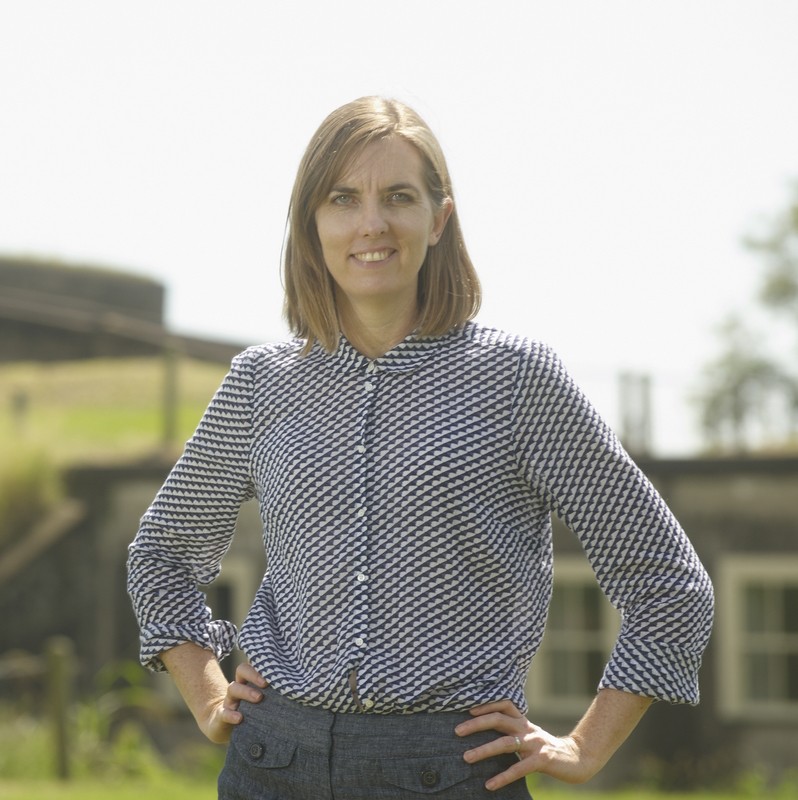2017 UQ Architecture lecture series with Kelly Greenop
By Anita Lewis | 22 February 2017

Kelly Greenop, School of Architecture, Fort Lytton
Planning is well underway for the 2017 UQ Architecture lecture series thanks to the efforts of Senior Lecturer and this year’s series curator, Dr Kelly Greenop, and her team at The University of Queensland School of Architecture.
The eight-week lecture series returns to SLQ every Tuesday evening from 21 March and it promises to provide understanding into the work of Australian and international architects and the contemporary challenges they face today.
“It is wonderful to again be presenting our first two lectures of the series in partnership with the Asia Pacific Architecture Forum, where we are showcasing international speakers focused on Asian work,” said Kelly.
“In the remaining part of the lecture series we have a selection of local, national and international architects and urban designers who are tackling current challenges, ranging from making more affordable housing in Australia, to creating nimble models of practice in Brisbane, and designing public spaces within a heritage context.
“This year’s focus is on architects whose work incorporate a sensitivity to the social, where economic and aesthetic forces also make space for how everyday people will experience and embrace the places they have created,” said Kelly.
Learn more about Kelly and the things that inspire her…
Tell us a little about your background, and what originally led you to architecture?
I went into studying architecture straight after helping my Mum and Dad do some renovations to our house while I was in high school. It was amazing fun to watch the spaces transform and to reimagine what was possible, so from that point I was hooked. I took a long gap between my two architecture degrees to wander around Europe and see all the sights from my history and theory lectures. I lived in Italy for several months and fell in love with people-watching and learning about new cultures and how different they were from my life in Brisbane. So when I returned to complete my degree I focused on cultural aspects of architecture with Professor Paul Memmott and wrote a thesis on Aboriginal Architecture in the central desert areas of Australia. I later went on to complete a PhD in Anthropology, still exploring Indigenous cultures, space and place, but this time in urban settings of Brisbane.
Where do you go for design inspiration?
For me great design is something that uplifts people and provides new possibilities, as well as that sensory pleasure of the shaped space or a visual delight. So I’m very inspired by vernacular spaces, by places shaped over decades or more that fit with the people and their ways of life in ways that transcend the corporate settings we often experience in contemporary Western cities. Having said that, contemporary good design can do this, and that’s when I feel it’s most successful, when the ‘fit’ between the people and the spaces makes it so comfortable to be in. People’s ideas themselves are also very powerful, and non-designers have often thought deeply about what wold make a good space, or what their needs really are, so it’s excellent to hear about that, it can change your perspective.
What are your top 5 favourite design books?
As an undergrad I basically borrowed Christopher Alexander’s A Pattern Language every week, I knew the library call number by heart! My husband bought me a copy as a graduation present so the library copy is safely back on the shelf now.
Delores Hayden’s The Power of Place helps explain how place is experienced differently by different people: women, people from minority groups, people living in poverty or with other challenges. The power of places is then made more powerful when understood and embraced by designers who can work with or against those forces to create something new.
Paul Memmott’s Gunyah Goodie + Wurely: The Aboriginal Architecture of Australia is a landmark work, summarising a career’s worth of research. The concept of architecture without buildings is wonderful to contemplate.
William H. Whyte’s The Social Life of Small Urban Spaces takes a detailed look at how the urban landscape can be so much richer and more lively if we better understand how people want to interact, and what drives them. It’s a classic.
Bill Gammage’s The Biggest Estate: How Aborigines Made Australia looks at ‘design’ from a meta perspective. Australian Indigenous cultures shaped their landscapes and aligned their lifestyles through totally sustainable interventions that were largely unnoticed by Westerners, but offer such insight.
What was your first car?
I actually don’t love cars, though they seem a necessary evil, my preferred transport is my bike with double panier racks. It is an 18 year old red Peugeot Ville, steel-framed and super sturdy. It’s heavy going up the hills, but nice and quick on the way down.
Every Tuesday from 21 Mar until 23 May (excl. 18 & 25 Apr)
6pm for 6.30pm start
SLQ Auditorium 1, level 2 | Free
Booking details released soon
and
Program of APAF events here
Comments
Your email address will not be published.
We welcome relevant, respectful comments.